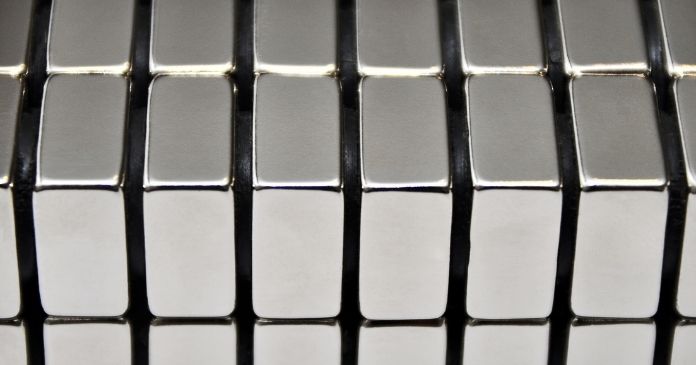The Pros and Cons of Using Neodymium Magnets
ALEXANDRIA, VA—Neodymium. Its name already sounds exciting. It’s new. It’s dynamic. Together with iron and boron, it forms the alloy Nd2Fe14B, quite possibly the most powerful permanent magnet on Earth. The strength of a neodymium magnet can call to mind visions of ants carrying away an entire sandwich; even a small neodymium magnet can hoist material a thousand times its own weight. Nd2Fe14B magnets are capable of some rather impressive feats, but operators should still be aware of some drawbacks as they deploy these mighty magnets—the kind of drawbacks that could, with improper care, jeopardize the life of the magnet. Keep these pros and cons of using neodymium magnets in mind as you put them to work.
Pro: Unrivaled Strength
Let’s start with the basics. A neodymium magnet has the best power-to-weight ratio of any magnet. If raw power is what you need, you can’t do better than this. This magnet doesn’t just bear incredible strength; it’s also great at keeping that strength. With proper handling and moderate temperatures, your neodymium magnet will continue to serve you well as long as you shelter it from moisture.
Con: Extremely Sensitive to Moisture
The Wicked Witch of the West, Gremlins, and neodymium magnets: three things you never want to get wet. Everyone is familiar with iron’s susceptibility to corrosion, and because iron is present in neodymium magnets—14 atoms per molecule to elemental neodymium’s 2—you’ll find that they’re just as liable to suffer damage from moisture as traditional iron magnets, if not more so. Don’t use neodymium magnets in situations where they’re likely to get wet, and don’t store them in areas that can harbor excess moisture. In those applications, you may want to consider different lifting magnets.
Pro: Can’t Beat the Price
How could it be that when it comes to lifting capacity, you can get the best without paying the most? Just as the strength of a neodymium magnet seems to defy its size, so too does its price point. Nd2Fe14B is often a more affordable alternative to the competition, making it an ideal choice for many industrial applications.
Con: Strong but Fragile
Among the pros and cons of using neodymium magnets, perhaps what takes readers by the most surprise is how something so powerful can be so brittle. Indeed, you don’t want to carelessly swing around one of these magnets, allowing them to collide with concrete, metals, or any hard surfaces. It doesn’t take a sky-high psi for a neodymium magnet to crack. Chips, fissures, and outright fractures will all critically compromise the magnetic integrity of a unit. Avoid the sort of careless operation that would harm your neodymium magnet.






Neodymium isn’t so cheap these days, and dysprosium, which is often used along with Nd, is in a bad place in terms of its supply.
… [Trackback]
[…] Read More here: thezebra.org/2021/10/04/the-pros-and-cons-of-using-neodymium-magnets/ […]